All the solutions provided in McGraw Hill My Math Grade 5 Answer Key PDF Chapter 12 Lesson 1 Polygons will give you a clear idea of the concepts.
McGraw-Hill My Math Grade 5 Answer Key Chapter 12 Lesson 1 Polygons
A polygon is a closed figure made up of line segments that do not cross each other.

Math in My World
Example 1
The building shown is the Pentagon in Washington, D.C. Describe the sides of the figure formed by the red outline. Does the red outline form a polygon?
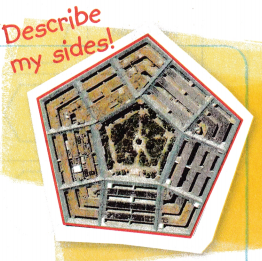
The figure has ____________ sides.
Do the sides ever cross each other? ____________
The figure is a polygon.
Answer:
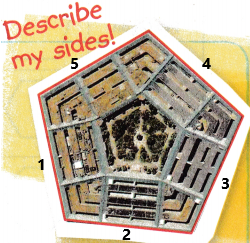
The figure has 5 sides.
So it can be called a pentagon.
Do the sides ever cross each other? No, the figure is not crossed.
The red outline forms a polygon.
A regular polygon is a polygon with congruent sides and congruent angles. Congruent sides are equal in length. Congruent angles have the same degree measure.
Example 2
Determine if the polygon appears to be regular or not regular.
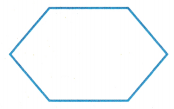
The top and bottom sides appear ____________ than the other sides.
Are all six sides of the polygon congruent? _____________
It is ______________ regular.
Answer:
The top and bottom sides appear longer than the other sides.
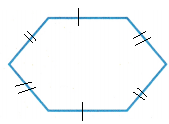
Are all six sides of the polygon congruent?
No, because the ups and downsides are longer than the other sides.
So it is not regular.
Example 3
Complete the table below.

Answer:

Guided Practice
Question 1.
Name the polygon. Determine if it appears to be regular or not regular.

The polygon has ____________ sides.
The sides appear to be _____________.
It is a ______________.
Answer:

The polygon has eight sides.
The sides appear to be congruent because it has all sides are equal and their angles are also equal.
It is a regular octagon.
Talk Math
Is a circle a polygon? Explain.

Answer:
A circle is not a polygon. A polygon is a closed figure on a plane formed from a finite number of line segments connected end-to-end. As a circle is curved, it cannot be formed from line segments, and thus does not fit the conditions needed to be a polygon.
Independent Practice
Mathematical PRACTICE Identify Structure Name each polygon. Determine if it appears to be regular or not regular.
Question 2.
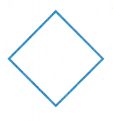
Answer:
The above-given shape is quadrilateral.
The sides and angles are equal.
Therefore, it is regular.
Question 3.
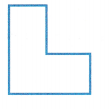
Answer:
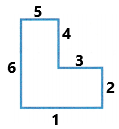
The above-given shape has 6 sides so it is a hexagon.
The sides are not equal or congruent.
Therefore, it is not regular.
Question 4.
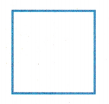
Answer:

The above-given shape is quadrilateral.
The sides and angles are equal.
Therefore, it is regular.
Question 5.

Answer:

The polygon has eight sides.
The sides appear to be congruent because it has all sides are equal and their angles are also equal.
It is a regular octagon.
Draw each polygon.
Question 6.
triangle; not regular
Answer:

The sides and angles are not equal. So it is not regular.
Question 7.
pentagon; not regular
Answer:
If the pentagon does not have equal side length and angle measure, then it is known as an irregular pentagon.

Question 8.
quadrilateral; not regular
Answer:
Irregular quadrilaterals are rectangle, trapezoid, parallelogram, kite, and rhombus. They are symmetrical but are not required to have congruent sides or angles.

Question 9.
triangle; regular
Answer:
A regular triangle is one for which all sides are congruent and all interior angles are congruent.
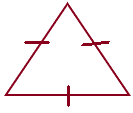
Problem Solving
Question 10.
What polygons make up the design?

Answer:
The above-given shapes:
Octagons and squares.
The polygons that make up the design are quadrilaterals which are octagons and squares.
Question 11.
Describe polygon B as regular or not regular.
Answer:

The circled one in the shape B is square
It has all sides equal so it is regular.
For Exercises 12 and 13, use the map shown on the right.

Question 12.
Circle the polygon that is a quadrilateral.
Answer:
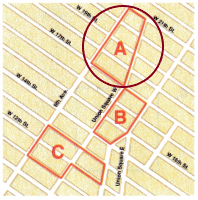
Polygon A is a quadrilateral
A quadrilateral is a closed shape and a type of polygon that has four sides, four vertices and four angles. It is formed by joining four non-collinear points.
Question 13.
Describe polygon C as regular or not regular.
Answer:
Polygon C is not regular.
The name the polygon C is a hexagon because it has 6 sides.
It is irregular.
A hexagon with unequal sides and angles is said to be an irregular hexagon.
HOT Problems
Question 14.
Mathematical PRACTICE Make Sense of Problems Explain why every square is a regular polygon.
Answer:
A Polygon having all the sides equal is all Regular Polygons. Since all the sides of the Polygon are equal therefore all the angles of a Regular Polygon are equal. That’s why every square is a regular polygon because it has four sides of equal length and four angles of equal measure.
Question 15.
Building on the Essential Question How can polygons be considered a subcategory of two-dimensional figures?
Answer:
Polygons are a subcategory of 2D figures because they carry all traits of 2D figures but also have special ones of their own. Examples of polygons are squares, rectangles, and triangles. Examples of non-polygons but still 2D figures are circles, ovals, and any other flat shape.
McGraw Hill My Math Grade 5 Chapter 12 Lesson 1 My Homework Answer Key
Practice
Name each polygon. Determine if it appears to be regular or not regular.
Question 1.

Answer:

The polygon has six sides. so it is a hexagon.
In geometry, a hexagon is a closed two-dimensional six-sided polygon. It is made up of six line segments and six vertices that form six internal angles.
– We can categorise the hexagonal shape into several types based on the measure of sides and angles. These are explained here with suitable figures and examples.
– From the above-given figure, it is a regular hexagon.
– A hexagon is said to be a regular hexagon if the length of all the sides is equal and the measures of all the interior angles are the same.
Question 2.

Answer:
The above-given:
The polygon is a triangle.
In Geometry, a triangle is a three-sided polygon that consists of three edges and three vertices. The most important property of a triangle is that the sum of the internal angles of a triangle is equal to 180 degrees.
– The above-given triangle is considered irregular, the three sides are not of equal length and all the three internal angles are also not in equal measure and the sum is equal to 180°.
Vocabulary Check
Fill in each blank with the correct word(s) to complete each sentence.
Question 3.
A polygon is a ____________ figure made up of line segments that do not cross each other.
Answer:
A polygon is a closed figure made up of line segments that do not cross each other.
– A Polygon is a closed figure made up of line segments (not curves) in a two-dimensional plane. Polygon is the combination of two words, i.e. poly (means many) and gon (means sides). A minimum of three line segments is required to connect end to end, to make a closed figure. Thus a polygon with a minimum of three sides is known as Triangle and it is also called 3-gon. An n-sided polygon is called an n-gon.
Question 4.
A regular polygon is a polygon with _____________ sides and ____________ angles.
Answer: congruent sides and congruent angles.
If all the sides and interior angles of the polygons are equal, they are known as regular polygons. Examples of regular polygons are square, rhombus, equilateral triangle, etc. In regular polygons, not only the sides are congruent but the angles are too. That means they are equiangular.
Problem Solving
For Exercises 5-7, use the tangram pieces shown at the right.

Question 5.
Which of the polygon(s) appear to be regular?
Answer: D
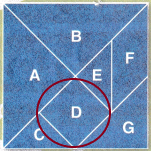
The name of the polygon D is a square.
A Polygon having all the sides equal is all Regular Polygons. Since all the sides of the Polygon are equal therefore all the angles of a Regular Polygon are equal. That’s why a square is a regular polygon because it has four sides of equal length and four angles of equal measure.
Question 6.
What polygons are represented in the tangrams?
Answer:
The tangram is an operation puzzle consisting of seven flat polygons, called tans, which are put together to form shapes.
– Quadrilaterals and triangles are represented in the tangrams.
Question 7.
Congruent figures have the same size and shape. Which polygons appear to be congruent?
Answer:
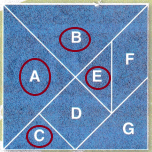
The polygons A, B, C, and E.
Two figures are congruent if they have the same shape. If two figures are having the same size and same shape, it is said congruent.
Question 8.
Name the polygon used to form the front of the tent shown. Determine if it appears to be regular or not regular.
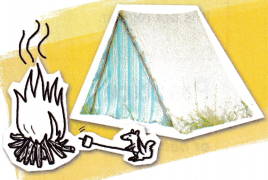
Answer:
Observe the figure,
The front of the tent is shown as a triangle.
all sides are equal, so it is said to be regular.
If we check the sides of the tent it looks like a square.
but they are not equal so it is not regular.
Question 9.
Mathematical PRACTICE Make Sense of Problems Explain why the figure is not a polygon.

Answer:
Actually, it is not a polygon because it is made up of more than line sine segments. simply, we can say that it is a curved shape and does not have sides or angles.
Test Practice
Question 10.
Which of the following figures is a polygon?

Answer: Option C is the correct answer.

Explanation:
– A polygon is a two-dimensional geometric figure that has a finite number of sides. The sides of a polygon are made of straight line segments connected to each other end to end. Thus, the line segments of a polygon are called sides or edges. The point where two line segments meet is called vertex or corner, henceforth an angle is formed. An example of a polygon is a triangle with three sides.
– A circle is also a plane figure but is not considered a polygon, because it is a curved shape and does not have sides or angles. Therefore, we can say, all the polygons are 2d shapes but not all two-dimensional figures are polygons.